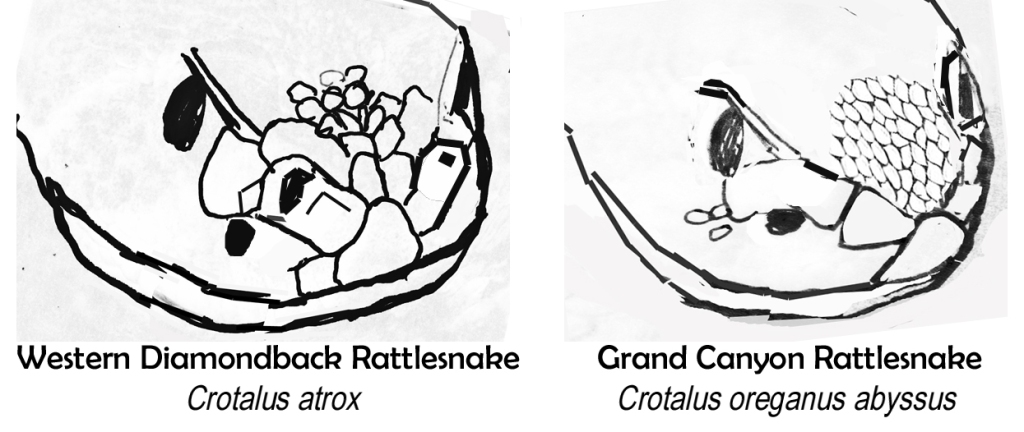
My hiking friends and I often see rattlesnakes in the Grand Canyon. We always notice something unique about them – compared to rattlers in other parts of Arizona, they’re downright colorful. The Grand Canyon rattlers vary from shades of brownish pink to salmon-colored , to reddish gray, and even copper colored.
Grand Canyon rangers had always noticed the same thing about the snakes’ coloration. But it wasn’t until 1929 that a naturalist/ranger at the Grand Canyon, Edwin McKee, stopped and paid close attention to one of these snakes. It suddenly struck the young naturalist that the pale pink rattlesnake he was looking at might be a different subspecies. It wasn’t the color that caught Eddie’s attention. It was the scales on the pink snake’s nose, which were configured a little differently from nose scales on other rattlesnakes.
According to the often-told story (I first heard it from Ranger Pam Cox in Phantom Ranch) Eddie grabbed the snake tightly by its neck, turned an about-face on the trail, and hiked back up to civilization. The snake did not enjoy the hike – it showed its fangs, twisted, and curled angrily around Eddie’s arm. Eddie’s vehicle at the trailhead was an old Model T, which had to be driven with two hands (and sometimes two feet) fully engaged. So Eddie thought it would be easier to hitchhike to the nearest ranger station. However, being off-duty, he was not wearing a uniform and no passers-by wanted to pick up a hitchhiker holding a squirming, live rattlesnake.
Eddie eventually gave up his hitchhiking idea and walked back to his car. He held the rattlesnake out of the car window with his left hand and gripped the steering wheel with his right. Somehow he got the car into first gear, but that was the only gear shift he could manage. He drove 25 miles along what is now Desert View Drive in first gear, with the furious snake hanging out the window. At the ranger station, the other rangers agreed with Eddie that the snake was indeed an example of the genus Crotalus (a Greek word for “rattle” or “castanet”). Was it a new subspecies, though?
They looked again at the configuration of the nose scales, among other things. They also considered the fact that this kind of snake seemed to be geographically limited to the Grand Canyon. Then they sent the snake to the San Diego Zoo, where experts looked at a number of things, especially those nose scales, and confirmed that it was indeed a new subspecies. A new, three-part scientific name was chosen for the snake. The first two name parts were Crotalus and oreganus. Eddie got to choose the third part of the name. He chose the word abyssus, referring to the “depths” of the Grand Canyon. Crotalus oreganus abyssus. The common name is now “Grand Canyon Rattlesnake.”
From Chapter 7 of Each Trail Has Its Own Story.